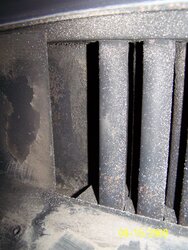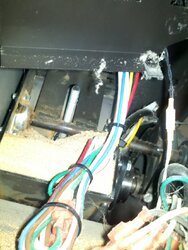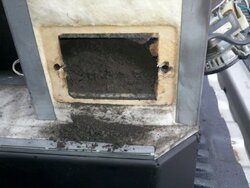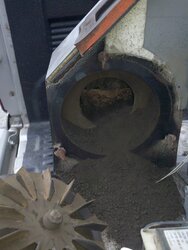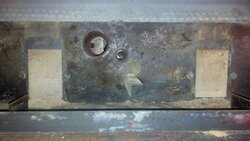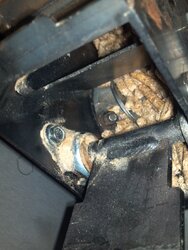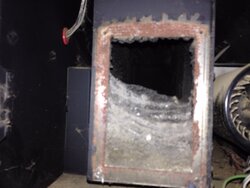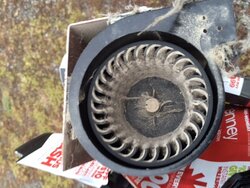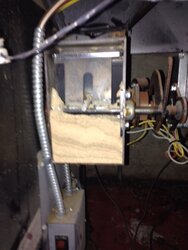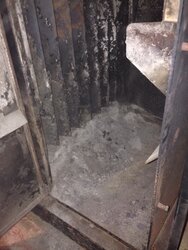Last edited by a moderator:
Deep cleaning of pellet stoves ***Visual aids included***
- Thread starter kinsmanstoves
- Start date
-
Active since 1995, Hearth.com is THE place on the internet for free information and advice about wood stoves, pellet stoves and other energy saving equipment.
We strive to provide opinions, articles, discussions and history related to Hearth Products and in a more general sense, energy issues.
We promote the EFFICIENT, RESPONSIBLE, CLEAN and SAFE use of all fuels, whether renewable or fossil.
You are using an out of date browser. It may not display this or other websites correctly.
You should upgrade or use an alternative browser.
You should upgrade or use an alternative browser.
- Status
- Not open for further replies.
TimfromMA
Minister of Fire
I pay my stove dealer to do it so while I cannot identify the parts, my stove had been deep cleaned every year since it was first installed.
SmokeyTheBear
Minister of Fire
I pay my stove dealer to do it so while I cannot identify the parts, my stove had been deep cleaned every year since it was first installed.
However you have not done one and if you can't identify those parts and have watched the dealer you do not know if they did one either.
There have been cases on here of people having hired out their cleaning to a "professional" only to find that the combustion blower was full of what the professional pushed down the venting while scrub a dubbing the vertical with a chimney brush.
Be ever vigilant and learn everything you can about your stove. Trust but verify IIRC goes the saying.
Oh and Eric is stirring the pot in preparation for the big lazy flame, flashing #2, where did my heat go, why won't my stove respond to the heat range button, what is the black stuff in the fire box time aka stove is gunked up and needs a deep clean time. Shortly he will offer pop quizzes.
Winner Winner Catfish dinnerHowever you have not done one and if you can't identify those parts and have watched the dealer you do not know if they did one either.
There have been cases on here of people having hired out their cleaning to a "professional" only to find that the combustion blower was full of what the professional pushed down the venting while scrub a dubbing the vertical with a chimney brush.
Be ever vigilant and learn everything you can about your stove. Trust but verify IIRC goes the saying.
Oh and Eric is stirring the pot in preparation for the big lazy flame, flashing #2, where did my heat go, why won't my stove respond to the heat range button, what is the black stuff in the fire box time aka stove is gunked up and needs a deep clean time. Shortly he will offer pop quizzes.

zrtmatos
Feeling the Heat
tHEM IS SOME dirty STOVE PARTS.If you can't identify these parts, you have not done a deep cleaning.
Eric
hossthehermit
Minister of Fire
Where's the Magic Heat and the spark bucket ????????????????
SidecarFlip
Minister of Fire
I can only identify the CA blower, all the rest is alien to me..... cause I don't have that brand. Pretty obvious though, the owner was a 'plug and play' person. Probably takes his car to the 10 minute oil change too, never checks the air in the tires and wonders why he gets poor gas mileage.
Being 'green' is wonderful isn't it?
Being 'green' is wonderful isn't it?
joed2323
Member
Daaaammmmnnnn girl! That's a dish right their... Lol, I like itThat is one dirty stove. While I can identify the parts im sure my boyfriend can't. Lol. Now you know who maintains our stove.
Phoenix Hatchling
Minister of Fire
But I cleaned the burnpot,why can't I get any heat? That is 1 neglected stove
rich2500
Minister of Fire
bogieb
Minister of Fire
I can identify them - there is a widget, a thing-a-ma-jig, a what-cha-ma-callit, a wavy thing, and some doodads 
Seriously, I am familiar with what they look like and where they are on my stoves, but don't know most of the names.
Oh, and my Harman doesn't have those little ash doors, so the only reason I know what they are / where they are, is because the St. Croix I got last month has them.

Seriously, I am familiar with what they look like and where they are on my stoves, but don't know most of the names.
Oh, and my Harman doesn't have those little ash doors, so the only reason I know what they are / where they are, is because the St. Croix I got last month has them.
Last edited:
Wilbur Feral
Minister of Fire
Agree with Smokey that unless you watch the service person AND educate yourself, you have no idea whether a stove is truly clean or not. I paid to have ours cleaned for three years by the person the original dealer recommended (because their people didn't do it any longer - a danger sign of a dealer that just likes to sell stoves, IMO).
Poor performance and a need for an additional stove led me to a different dealer for a chimney vent install, and their service person did a MUCH beter job with the annual cleaning, taking the time to teach me a few things as well. He left the industry, so now I just do my own cleaning and most of the service work as well. Stoves are much cleaner. Had the original dealer's recommended person still been doing it, we would have had multiple service calls by now.
Do it yourself, or watch 'em like a hawk, at least until you get someone you KNOW you can trust. This is far more involved than what the gas furnace guy does for most homeowners, and even more important.
Poor performance and a need for an additional stove led me to a different dealer for a chimney vent install, and their service person did a MUCH beter job with the annual cleaning, taking the time to teach me a few things as well. He left the industry, so now I just do my own cleaning and most of the service work as well. Stoves are much cleaner. Had the original dealer's recommended person still been doing it, we would have had multiple service calls by now.
Do it yourself, or watch 'em like a hawk, at least until you get someone you KNOW you can trust. This is far more involved than what the gas furnace guy does for most homeowners, and even more important.
SmokeyTheBear
Minister of Fire
All them there places are places that get crudded up to the point your stove is going to not work even close to correctly. Usually the big rush of plugged stoves starts after the new stoves have burned a ton or two as most but not all are tolerant of a bit of crud. Also some pellets are better than others in not making a mess of things quickly, there is a big difference in ash coming from a top of the line pellet and one that just makes grade. The same is true about fines. Pet fur and other household pollutants can't be controlled by a pellet mill only the person running the stove.
While not all stoves have the same things in the same spot they have mostly similar things in the same relative spot. If you become familiar with the air flows (there are two) and follow them, all of the places that the crud pile ups in will be revealed.
I like simple stoves, the more bells and whistles just complicate things and draw the attention away from understanding the stoves need for being clean and how to really clean it. You can have a dozen error codes, flashing lights, beeps, unresponsive controllers, flame signals, and smoke signals all just saying clean me. You also will need to replace parts more often as the mess gets into them and wears them out faster than if clean (and in some cases lubricated).
If you went the used stove route, well chances are extremely high that the stove is already in a bad way in the clean category.
If you left the stove uncleaned after a season and did not cap the exhaust and air intake, extra effort is likely needed in the fall because dampness will make ash into lumps that stick inside the internal air pathways.
Remember Eric does do POP quizzes and that a clean stove is a happy, warm, and safe stove.
While not all stoves have the same things in the same spot they have mostly similar things in the same relative spot. If you become familiar with the air flows (there are two) and follow them, all of the places that the crud pile ups in will be revealed.
I like simple stoves, the more bells and whistles just complicate things and draw the attention away from understanding the stoves need for being clean and how to really clean it. You can have a dozen error codes, flashing lights, beeps, unresponsive controllers, flame signals, and smoke signals all just saying clean me. You also will need to replace parts more often as the mess gets into them and wears them out faster than if clean (and in some cases lubricated).
If you went the used stove route, well chances are extremely high that the stove is already in a bad way in the clean category.
If you left the stove uncleaned after a season and did not cap the exhaust and air intake, extra effort is likely needed in the fall because dampness will make ash into lumps that stick inside the internal air pathways.
Remember Eric does do POP quizzes and that a clean stove is a happy, warm, and safe stove.
Those pictures are from different stoves. Harman, Breckwell, QuadraFire, and a few others. When I go to a service call or do an install I am like a Japanese tourist taking pictures and documenting everything. It is hard enough to find much less keep an insurance policy for a business where I put fire into people's houses. I will not lose sleep on the safety of a customer's family or property.
One day I will post pictures of bad installs that I have came across. Some are from after the house has caught fire. This was due to the owner hiring someone without knowledge of what he was doing or the homeowner attempting to save money by doing the job himself and doing it wrong.
Eric
One day I will post pictures of bad installs that I have came across. Some are from after the house has caught fire. This was due to the owner hiring someone without knowledge of what he was doing or the homeowner attempting to save money by doing the job himself and doing it wrong.
Eric
Husky
Feeling the Heat
If you can't identify these parts, you have not done a deep cleaning.
Eric
It looks like you need to clean more often. Being this dirty can lead to part failure prematurely but it is good you know your parts!
Snowy Rivers
Minister of Fire
I have found that the regular cleaning of the fire box, ash baffles and such followed by a generous SUCK with the leaf blower (door open) clears everything out.
The extreme velocity and volume of air howling through the stoves innards while the leaf blower is sucking away tends to blast nearly everything off the exhaust fan blades as well.
WARNING
Always unhook the rubber hose from the pressure switch before using the leaf blower, as there is a small possibility that the extreme air velocities could damage the switch ????
Just a good habit and take seconds to do.
I removed the exhaust blower after a good romp with the leafer and the fan was spotless.
Any more I forgo the tear down on the fan, unless I suspect issues.
Another trick to really deep clean the innards is a trick that was used ages past to clear the fire tubes on steam locomotives.
This was to introduce fine sand into the air stream of the fire box.
With a helper running the leaf blower, use a small plastic scoop and introduce very fine sand into the air stream going past the heat tubes.
The heat tubes generally have scrapers on them, but the inner passages that are hard to reach can collect a lot of crud that the sand will dislodge.
I have used the "magic sand " trick on our big Whit a time or two, and the crud that comes out is amazing.
You don't need a lot to do the deed.
Maybe a cup full sucked up into the stoves innards.
I have seen stoves that were soooooooooooooooooooo full of crap that they could not even sustain a fire.
In fact, our big Whit was one of those.
The entire inner passage network was plugged solid with ash.
Getting into the mechanical cabinet and vacuuming the dust, pellet fines, cob webs and pet fur out is a must.
Another nasty job is cleaning the room air blower wheel/s
I usually dampen an old towel and drape it over the air outlet, then blow air from my air compressor with a nozzle into the blower wheels.
Be careful not to overspeed the fans.
If you use a soft 1/2" paint brush to gently dislodge the crud in the squirrel cage fins, be careful not to tweak the fan .
Some fans are plastic, some are metal.
The buildup of crud over time will result in the fan becoming unbalanced due to areas of that same crud falling out of the fan, and thus leaving some areas heavier.
Removing the fans squirrel cage and washing them is not a bad thing, but I TEND TO AVOID this due to the possibility of bending or ???? the fan.
Generally just a good whizz with the air hose will suffice.
The damp towel will catch most of the dust that comes out
The draft inducer fan (if your stove has one) can benefit from the same treatment.
The blades of these type of fans require a certain angle to function well, and the dirt buildup causes the air flow through the blades to become more turbulent and less efficient.
Getting to know your stove INTIMENTLY is paramount.
As was mentioned, sometimes the SO CALLED professionals do little more than take your $$$$.
I have had our stoves apart and scattered all over the floor more than once, ohhhhh yessss, we are on a first name basis.
Knowing every little nuance about your stove and how it works is a real plus.
This is a great thread.
Snowy
The extreme velocity and volume of air howling through the stoves innards while the leaf blower is sucking away tends to blast nearly everything off the exhaust fan blades as well.
WARNING
Always unhook the rubber hose from the pressure switch before using the leaf blower, as there is a small possibility that the extreme air velocities could damage the switch ????
Just a good habit and take seconds to do.
I removed the exhaust blower after a good romp with the leafer and the fan was spotless.
Any more I forgo the tear down on the fan, unless I suspect issues.
Another trick to really deep clean the innards is a trick that was used ages past to clear the fire tubes on steam locomotives.
This was to introduce fine sand into the air stream of the fire box.
With a helper running the leaf blower, use a small plastic scoop and introduce very fine sand into the air stream going past the heat tubes.
The heat tubes generally have scrapers on them, but the inner passages that are hard to reach can collect a lot of crud that the sand will dislodge.
I have used the "magic sand " trick on our big Whit a time or two, and the crud that comes out is amazing.
You don't need a lot to do the deed.
Maybe a cup full sucked up into the stoves innards.
I have seen stoves that were soooooooooooooooooooo full of crap that they could not even sustain a fire.
In fact, our big Whit was one of those.
The entire inner passage network was plugged solid with ash.
Getting into the mechanical cabinet and vacuuming the dust, pellet fines, cob webs and pet fur out is a must.
Another nasty job is cleaning the room air blower wheel/s
I usually dampen an old towel and drape it over the air outlet, then blow air from my air compressor with a nozzle into the blower wheels.
Be careful not to overspeed the fans.
If you use a soft 1/2" paint brush to gently dislodge the crud in the squirrel cage fins, be careful not to tweak the fan .
Some fans are plastic, some are metal.
The buildup of crud over time will result in the fan becoming unbalanced due to areas of that same crud falling out of the fan, and thus leaving some areas heavier.
Removing the fans squirrel cage and washing them is not a bad thing, but I TEND TO AVOID this due to the possibility of bending or ???? the fan.
Generally just a good whizz with the air hose will suffice.
The damp towel will catch most of the dust that comes out
The draft inducer fan (if your stove has one) can benefit from the same treatment.
The blades of these type of fans require a certain angle to function well, and the dirt buildup causes the air flow through the blades to become more turbulent and less efficient.
Getting to know your stove INTIMENTLY is paramount.
As was mentioned, sometimes the SO CALLED professionals do little more than take your $$$$.
I have had our stoves apart and scattered all over the floor more than once, ohhhhh yessss, we are on a first name basis.
Knowing every little nuance about your stove and how it works is a real plus.
This is a great thread.
Snowy
- Status
- Not open for further replies.
Similar threads
- Replies
- 2
- Views
- 490
- Replies
- 11
- Views
- 353
- Replies
- 0
- Views
- 351
- Replies
- 13
- Views
- 665


